Wenxian Zhang
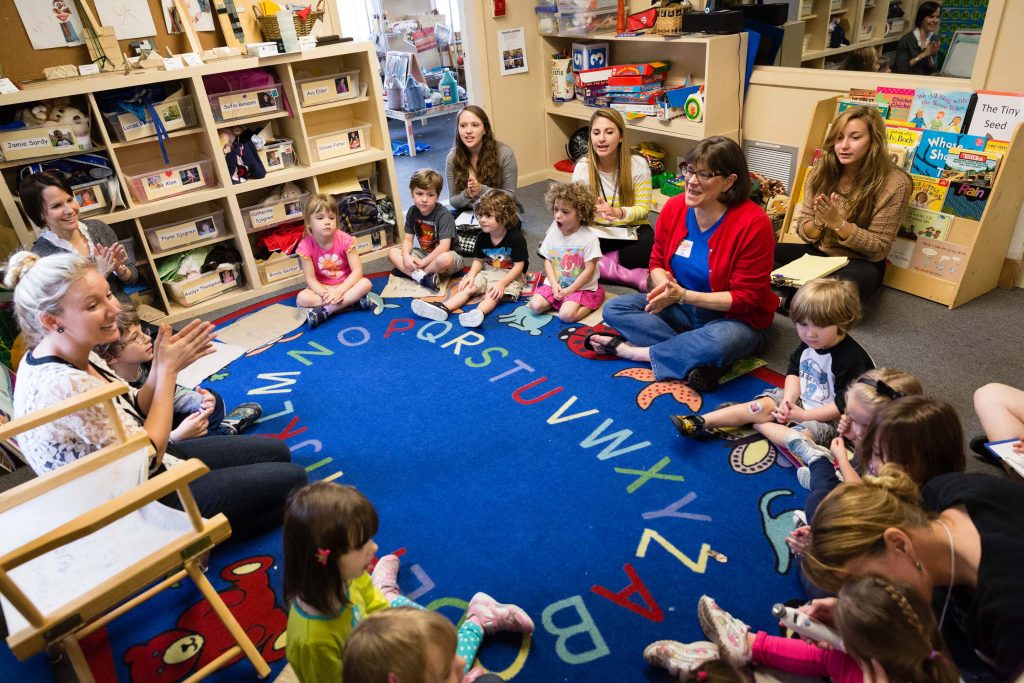
Since its founding in 1885, Rollins College has distinguished itself with excellent academic programs and innovative endeavors in liberal arts education, and one such undertaking is the much-cherished Child Development & Student Research Center (CDC). By connecting students with children and families for early education, psychology learning, and academic research, the CDC is a laboratory preschool that educates Rollins undergraduates about child development through hands-on research. The CDC also provides the high-quality diverse and inclusive preschool services for families in the Rollins and local communities and advocates for wider public understanding of current research and best practices in early childhood development.[1]
Founding of the CDC and Its Early Development
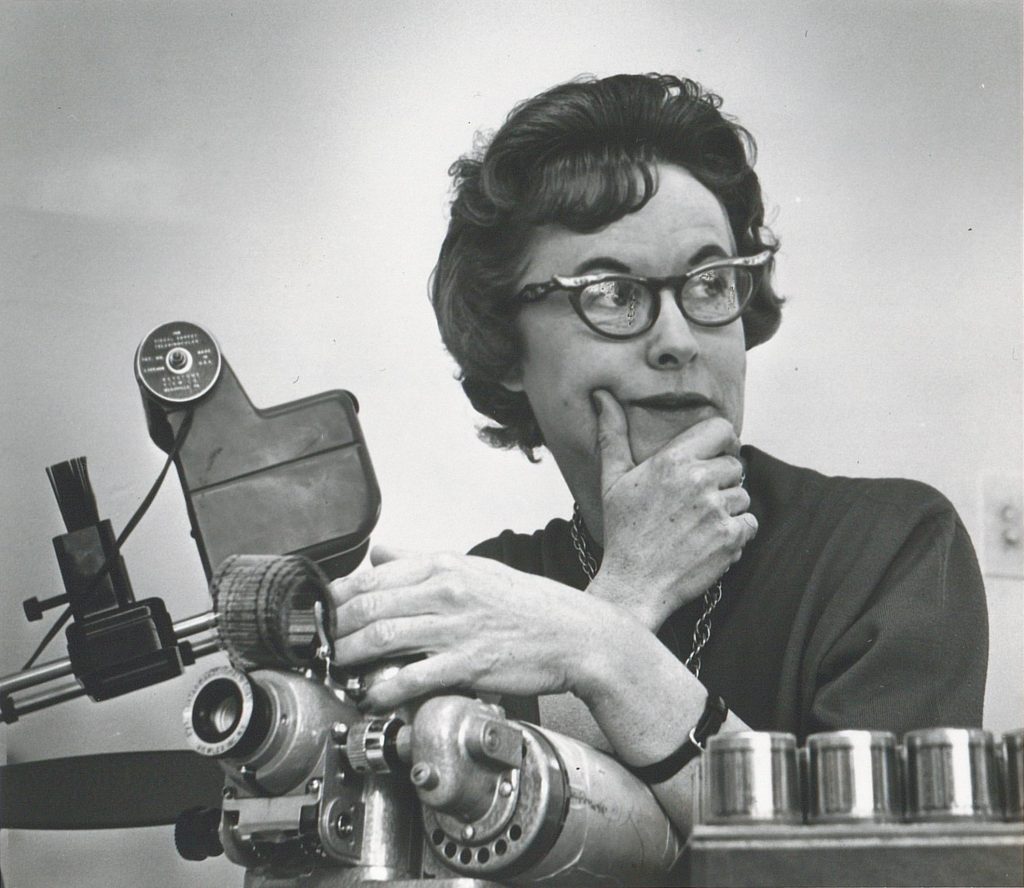
The Child Development & Student Research Center traces its beginning to November 1972, when Dr. Carolyn Burnett first submitted her proposal for a student involvement center at Rollins. After earning her doctorate in Education from the University of Florida, Burnett joined Rollins faculty as an assistant professor of psychology in 1961 and soon established herself as an expert in Central Florida on nurturing children with emotional and behavioral issues. Besides teaching in behavioral science, she also maintained a private education center in Orlando and served as coordinator of the College’s Student Services Center and director of Psychological Services. In that capacity, she began to train students to work with disadvantaged children and arranged field experiences in connection with their coursework. By 1972, the number of enrolled children in the program reached nineteen. Fully convinced of the value of this behavioral learning laboratory at Rollins, she envisioned the new involvement center staffed with Rollins students and community volunteers “would be the first of its type in any college or university campus in the United States. It could serve as prototype for the establishment of similar endeavors throughout the country.”[2]
With modest funding support from President Jack Critchfield’s administration, Rollins’ Child Development Center was set up in a large room on the first floor of Knowles Hall II in 1975. Furnished with toys, games, reading materials, other learning equipment, and a designated outdoor playground, the CDC initially enrolled 23 children age one to four for preschool classes three days a week, and students in Burnett’s psychology courses were required to work two hours each week to design and carry out education projects to engage the children.[3] While Rollins students learned to use simple behavioral methods to train toddlers in language development, this engagement also turned out to be a very rewarding experience for enrolled children, especially those with learning disabilities, which Burnett believed one “can never prepare a child too early to cope with today’s social environment.”[4]
Notwithstanding its initial success, the CDC also experienced growing pains in its first decade. When demands from the community far exceeded the capacity, Burnett had to clarify that the Center was established as a learning laboratory, not a daycare or babysitting service of the College. In a letter to a concerned parent in 1976, Burnett wrote: “People who know my emotional and philosophical commitment to early childhood experiences would never believe that I would be a ‘babysitting service.’ … We are not really ‘educating’ the children, we are trying to show them how to live a creative, satisfying and positive life, so the preparation for school is of this nature rather than learning numbers, writing your names, etc.”[5] After Burnett’s retirement in 1979, Rollins reaffirmed its commitment to keep early childhood education in its curriculum by establishing an annual regular CDC budget during President Thaddeus Seymour’s tenure, and Dr. Martin Farkash, a clinical psychologist, was appointed to supervise student volunteers led by staff assistant Nanette Mitchell. After Knowles Hall II was demolished in August 1983 to make space for Olin Library, CDC was first moved to a temporary location and then the Ruth House, a small building that once served as a women’s dormitory and faculty residence on the corner of Fairbanks and Chase Avenues. In 1984, Professor Robert Thompson became the center director, and along with his assistant Marien Lugo, the CDC enrolled eighteen children and still operated learning programs on three mornings a week.
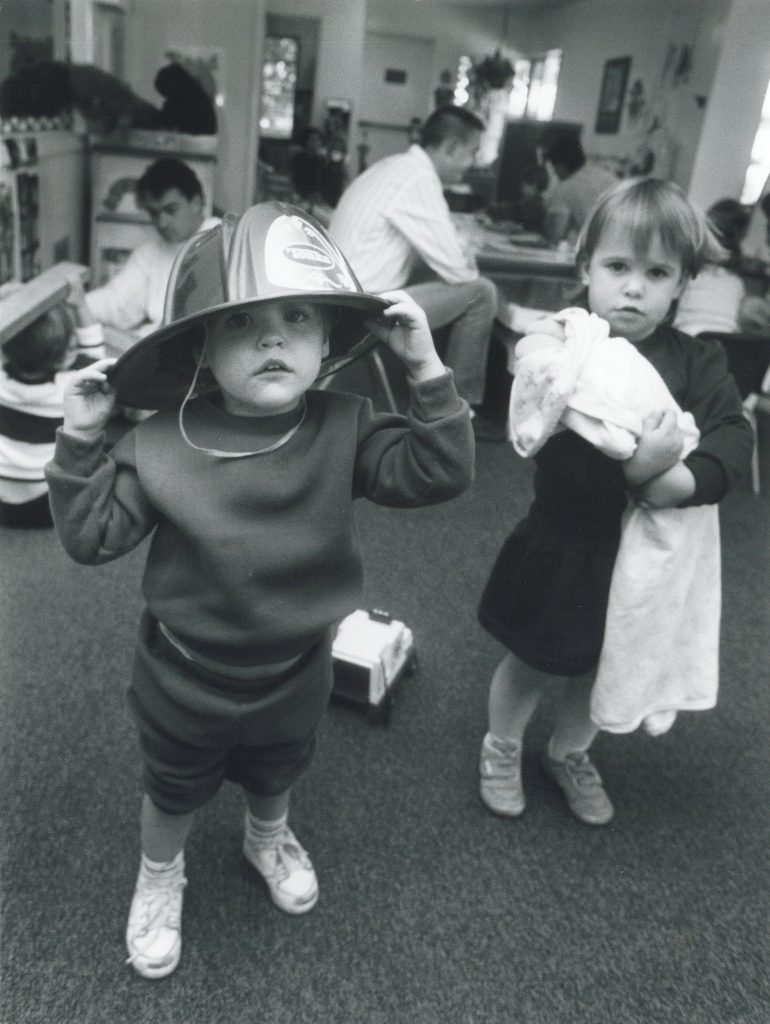
A media highlight in the history of the CDC is Mr. Rogers’s visit in 1991. Fred McFeely Rogers ’51 ’74H, one of Rollins’ most beloved alumni, was known as the creator and host of the preschool television series Mister Rogers’ Neighborhood. Rogers once fondly reminisced about his student years for shaping his belief in constructivist pedagogy, stating:
“So many of my particular ‘neighborhood’ at Rollins helped me to see more clearly than ever that education is a process. One learns from within not as something is superimposed from without. It takes a long time to grow. I’m glad that there are still some schools which allow their students ample opportunities for developing their own unique identities.”[6]
During his 40th anniversary alumni reunion on March 8, 1991, Fred Rogers dedicated his stone in the Rollins Walk of Fame. Afterwards, he visited the CDC, sat for circle time, and sang his famous neighborhood song with fifteen preschoolers. While chatting with faculty, students, and children, he remarked: “I think that whatever profession we choose, the most important thing we can develop along the way is listening.… the only thing that matters is relationships.”[7] After the death of Fred Rogers, the CDC held a special program to celebrate the life of everyone’s favorite neighbor, author, producer, and early childhood educator, who believed “childhood is where we build the foundation for the rest of our lives.”[8] To honor Mr. Rogers’ legacy at Rollins, and with funding from the McFeely Rogers Foundation and support from Joanne Rogers ’50 ’05H and Hedda Sharapan, associate producer of Mister Rogers’ Neighborhood, the CDC also co-sponsored the Good Neighbor Conference in the ensuing years, which was a two-day, on-campus event with public seminars, workshops, and a sweater drive to explore the ideals of Rogers’s life and work, and how to continue those values in our ever-changing, multicultural society.[9]

Sustained Growth in Experiential Learning and Innovative Research
In 1990, Dr. Sharon Carnahan joined the Rollins faculty as a developmental psychologist and began to direct the program a year later. Under her leadership, the Child Development & Student Center experienced a steady expansion. After certified preschool teacher Patricia Moser and a classroom assistant joined the team, the Rollins CDC obtained the state license in early childhood education and its programs were expanded to five mornings each week, ten months of the year, enrolling children ages 2 to 5 years of age. Serving the needs of dozens of undergraduates each semester, the CDC strives to provide an all-inclusive learning environment, including children with special developmental needs. Accordingly, the Center has twice won the Down Syndrome Association of Central Florida Award for excellence in the inclusion of children with special needs and learning disabilities.[12] To better align the undergraduate and children’s learning goals, Carnahan adopted the High Scope Child Observation Record that is still in use at the Center.[11] The curriculum and the case study methodology that she developed for undergraduates, including more than 20 hours of observation, assessments, and combined with a family home visit, are still in practice today. In a community outreach effort, Carnahan also implemented Screen for Success in the 1990s, a county-wide program that trained childcare teachers to identify children with special needs and refer them for help, for which she was honored by the Orange County School Readiness Coalition as “Community Partner of the Year” in 2003.[12]
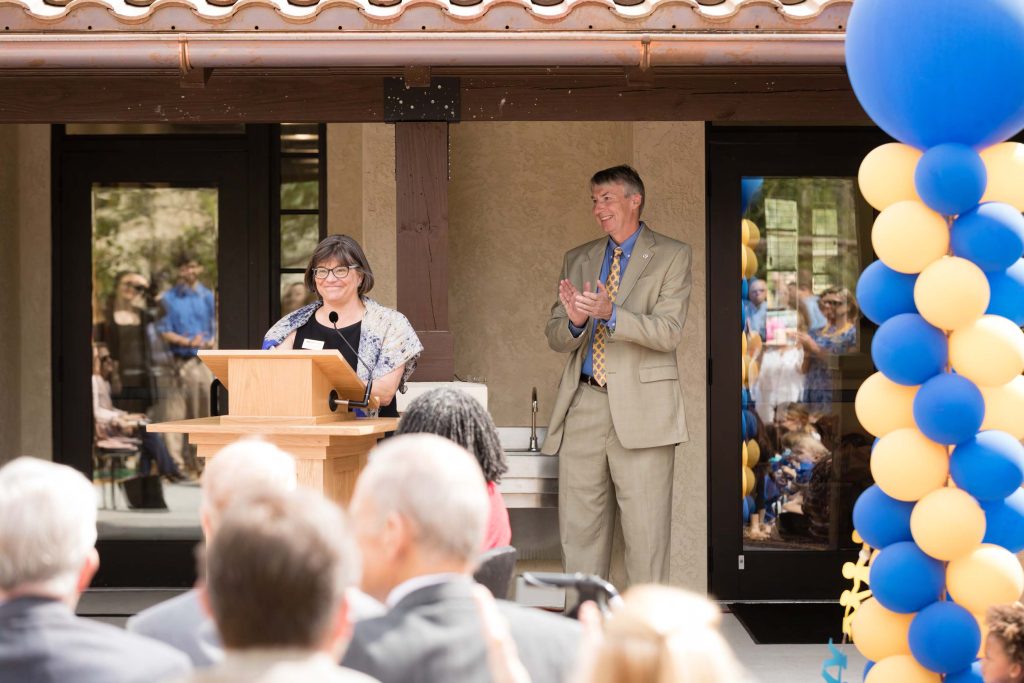
Over the past two decades, the CDC has sustained its growth as an innovative laboratory school in Central Florida. In 2005, Diane Terorde-Doyle, an experienced teacher in early childhood education, was appointed the program director. With strong institutional support, the center staff received specialized training in Positive Behavior Support, Social Emotional Coaching, and the Reggio Emilia method in child development. Each year under faculty guidance, Rollins first-year students in Perspectives in Psychology practice objectively observing the preschoolers at play through the one-way mirrors at the CDC. Upper-level students in Developmental Psychology and Senior Seminar in Developmental Psychology work directly with the preschoolers, applying what they learn in the classroom into real world practice.
Built on the principles of respect, responsibility, and community through exploration, discovery, and play, the theoretical framework of the CDC is the Reggio Emilia Philosophy in early education. Reggio Emilia is a city in northern Italy, and the Reggio Emilia Approach was developed by teacher, psychologist, and pedagogical consultant Loris Malaguzzi (1920-1994) after World War II, which is a student-centered and constructivist curriculum that uses self-directed, experiential learning in relationship-driven environments.[13] Based on this pedagogical approach, the CDC has provided a special learning opportunity for young children as well as a genuine laboratory experience for students where they can practice active learning through hands-on work. Reflecting upon their times at the Center, many students saw that they are among their best activities at Rollins, and “some of the most memorable lessons learned during their college years were taught to them by two-year-olds.” [14]
With its exceptional preschool programs that serve the family needs of faculty, staff, alumni, and community members, the CDC has also offered faculty and students a wealth of opportunities for on-site research and scholarship. Based on her experiences at the CDC and with the Screen for Success program, Carnahan in 2004 published Making a Difference: Best Practices in Screening, Assessment, and Curriculum Means Quality Outcomes for Children. This co-authored book has been used by Florida Children’s Forum to train teachers and childcare staff to identify and help children with learning problems.[15] Another fascinating example of innovative learning that took place at the CDC is Rollins’ Philosophy for Children project. In 2015, Dr. Erik Kenyon required his students to develop child-oriented philosophy programs that were first tested out at Rollins’ preschool laboratory. Through partnership with the CDC, Kenyon collaborated with Terorde-Doyle and Carnahan to formulate lesson plans that use games, dialogical readings, and art project to encourage children to engage in discussions of ethical ideas such as love, friendship, fairness, right and wrong.[16] As a result of their groundbreaking preschool teaching and research, since its publication in 2019, Ethics for the Very Young has become a great pedagogical resource for early childhood educators.[17]
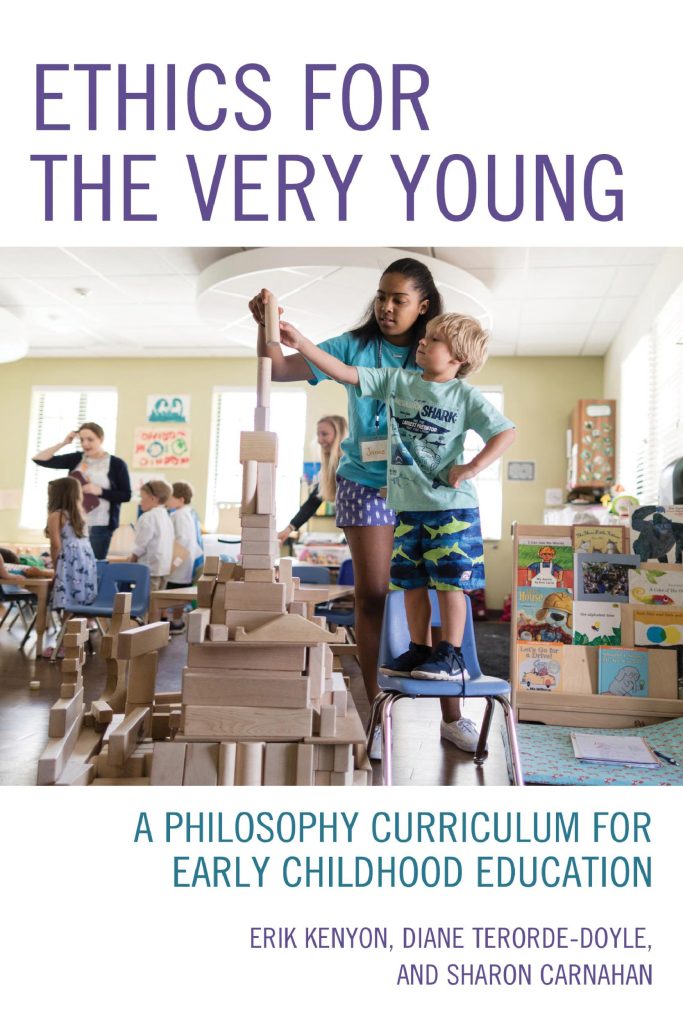
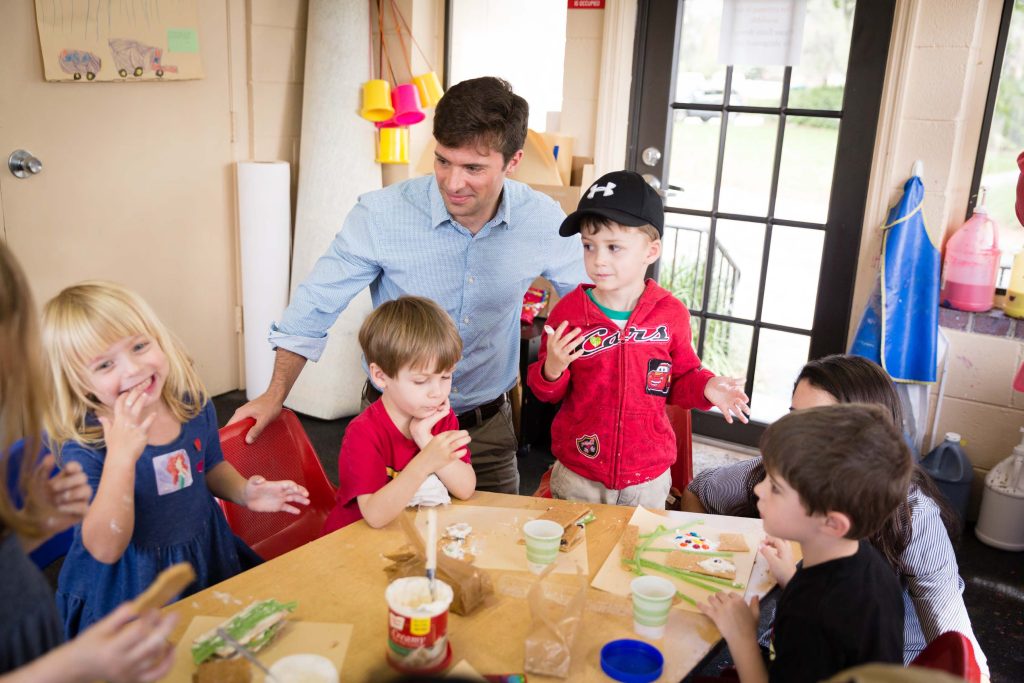
On the left, the book cover of Ethics for the Very Young, which features innovative learning at the CDC. On the right, Visiting Assistant Professor Erik Kenyon observes the preschool children building models. Photo by Scott Cook.
In 2008, Alice Davidson joined the psychology department as an Assistant Professor of Developmental Psychology and has been teaching and conducting research at the CDC ever since. Her community-engaged scholarship on young children’s narrative skills and social-emotional development and on parental wellbeing has involved numerous undergraduate students at Rollins, who have served as co-authors on journal article presentations and co-presenters at international conferences. Dr. Davidson assumed the role of Executive Director of the CDC in 2024 with Carnahan’s retirement. In addition to overseeing the laboratory preschool, she and Terorde-Doyle launched a pilot aftercare program in 2024 for elementary-aged children of Hamilton Holt School students, Holt Evening EduCare. Hostedin the undergraduate classroom at Hume House, this is a new, low-cost evening childcare program where engagement is on and iPads are off, and “no other service like this in the Central Florida community.”[18] Thanks to a generous donation from the Hume Foundation, this program provides subsidized, high-quality childcare for children of adult learners and an additional learning lab for Rollins students.
Hume House: A Vital Hub for Learning, Scholarship & Community Outreach
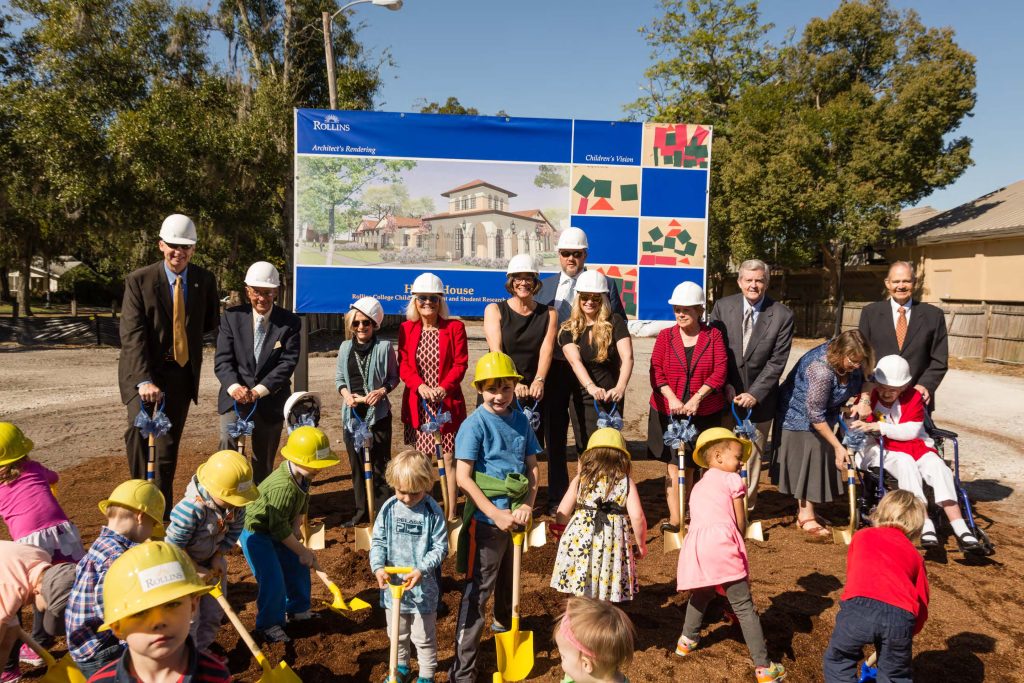
Operated in the Ruth House since the 1980s, the CDC could not meet the growing demands of the community in early childhood learning given the limited space restrictions of their facility. On February 18, 2016, Rollins broke ground for the new building on the west edge of the campus; and on March 6, 2017, Hume House was dedicated at the corner of Holt and New York Avenues in Winter Park. Named for Warren ’39 ’70H and Augusta Hume ’39, Hume House is made possible with generous contributions from Warren and Augusta Hume Foundation, Elizabeth Morse Genius Foundation, Elinor and T.W. Miller Jr. Foundation, Daniel and Amy Fields, Thomas ’84 and Katherine Hauske, and Elin Nordegren ’14.[19] The 5,050-square-foot building has tripled the size of the previous structure, including three children’s classrooms with observation booths, a full undergraduate classroom with one-way mirror, art studio, and expanded office and research space. On the dedication of the Hume House, President Grant Cornwell remarked with excitement: “We are pleased that our students and the children and families served by this program have an updated, spacious facility that will benefit the children who attend our center today and our future professionals of tomorrow.”[20]
Since the dedication of this new building, the CDC has increased its enrollment to forty children, the staff has grown to nine employees, and each semester over 150 undergraduates from multiple disciplines work in the classrooms or observe through the one-way mirrors. In addition to those from psychology, students from Anthropology, Art & Art History, Biology, Education, Mathematics and Computer Science, Global Languages, Philosophy, Physics, the Holt School, and the Crummer Graduate School of Business have either actively participated in or experienced the real-world learning at the Center. One such innovative example of student engagement occurs in ENG300: Writing Books for and with Young Children, taught by Dr. Matt Forsythe, which pairs honor students with preschoolers experimenting on how to create new children’s literature at the Hume House. By partnering with 4- and 5-year-olds in brainstorming from book titles and characters to plots, narratives, and illustrations, the takeaways from this class extend far beyond the creative process, as the immersive collaboration provided such a transformative experience for both the students and children when they learn together while exploring the fine art of writing children’s books.[21] In a typical academic year, the student contact hours at the CDC easily surpass 1,000 hours, and over the last thirty years more than 1,500 Rollins students have experienced the high-impact practice at the CDC. These learning experiences with children, teachers, and researchers, prepare Rollins students to go on to serve their communities as psychologists, scholars, behavior analysts, pediatricians, allied health professionals, and future parents.
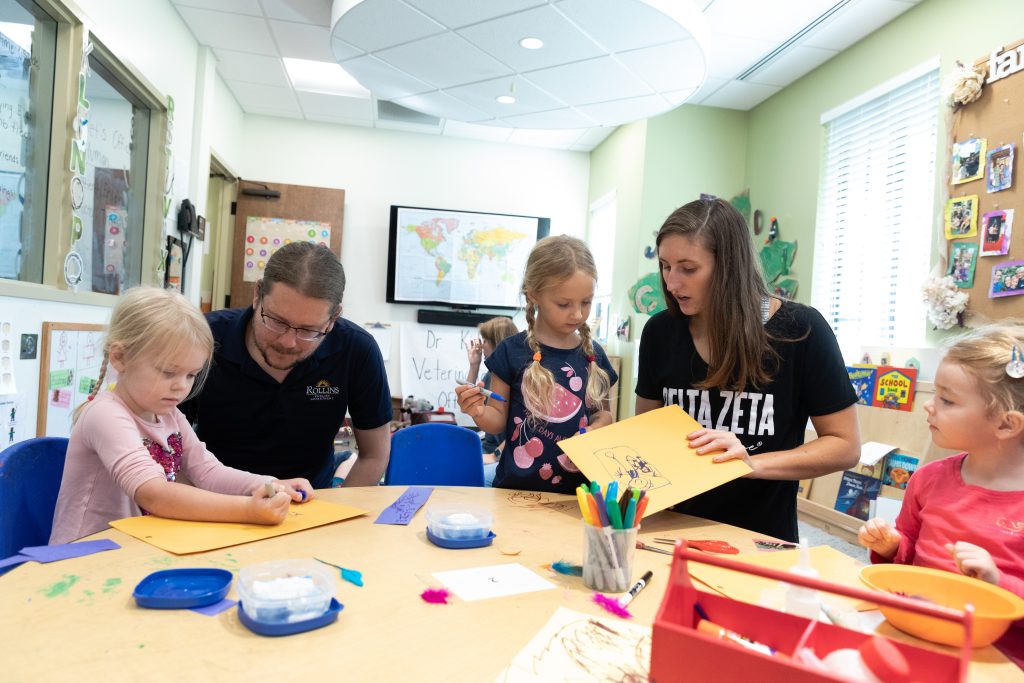
Photo by Scott Cook.
In 2024, after more than three decades of teaching, research, and services, Carnahan retired from Rollins. Reflecting on her long stint at the CDC, she passionately observed:
“We like to think we’re changing lives with psychology. But here we see it working across campus. Undergrads from physics, art, and English are asking to come and contribute. Because no matter what field of study you’re in, when a 3-year-old sits on your lap, it changes the way you look at the world”[22]
Today, with a full-time staff of 7 teachers, a director, and executive director, the CDC serves approximately 40 children between the ages of 2 and 5 years with a full range of abilities from accelerated learners to those with Down syndrome and on the autism spectrum. Hume House has become a vibrant space where preschool and college studies intersect, and where people of all ages learn and socialize together. Within the International Association of Laboratory Schools (IALS), there are about 50 laboratory preschools at liberal arts colleges, and Hume House is the only one at a private, four-year liberal arts institution in Florida. Following the best practices in early childhood education, Hume House is also a demonstration site for Positive Behavior Support, and has welcomed visitors and observers from Carnegie Mellon, University of Miami, Fred Rogers Company, United Way, UCF, Seminole State College, and many preschools.
Over its 50-year history, the CDC has grown to become a flagship program in experiential learning and community service at Rollins. As a laboratory school, the CDC today incorporates undergraduate teaching, excellence in children’s education, experimentation in curriculum, a commitment to staff development, and community service. Through its all-inclusive learning environment tailored to individual needs, the CDC has provided not only an essential service to the local community, but also an active, firsthand teaching and learning experience to Rollins faculty and students. Symbolizing the College’s heritage of innovation and excellence in liberal arts education, the Hume House Child Development & Student Research Center is not just a preschool, but “a cornerstone of learning, research, and community engagement” in Central Florida.[23]
Acknowledgements
Professional guidance and support from Drs. Sharon Carnahan, Alice Davidson, Ms. Diane Terorde-Doyle, and Mr. David Matteson are gratefully acknowledged.
[1] Mission of the Hume House Child Development & Student Research Center, https://www.rollins.edu/child-development-student-research-center/.
[2] Carolyn Burnett and James Upson, “A Proposal to Establish and Fund an Involvement Center at Rollins College.” November 17, 1972. 20M Child Development Center, Jack Critchfield Presidential Records111:4, Rollins College Archives, Winter Park, Florida.
[3] “Social Development Gets Early Start,” Sentinel Star/Winter Park Sentinel, June 3, 1975.
[4] Ibid.
[5] Carolyn Burnett to Mrs. Sprimont, October 15, 1976. 20M Child Development Center, Jack Critchfield Presidential Records121:17, Rollins College Archives, Winter Park, Florida.
[6] Fred Rogers, “An Alumnus Speaks: Misterogers’ Neighborhood,” Rollins Alumni Record, December 1968, 5, https://scholarship.rollins.edu/cgi/viewcontent.cgi?article=1154&context=magazine.
[7] Karen Pankowski, “Mr. Rogers Returns to Old Neighborhood,” Orlando Sentinel, March 9, 1991, A1 & 7.
[8] Sharon Canahan, “Are Kids Learning from Mister Rogers’ Example?” Orlando Sentinel, December 10, 2019.
[9] “Rollins Holds Conference on Being a Good Neighbor in Today’s Multicultural Society,” Rollins College New Release, February 17, 2009; Juwon Ajayi, “Good Neighbor Conference Encourages Dialogue,” Sandspur, February 27, 2009. http://stars.library.ucf.edu/cfm-sandspur/1879.
[10] “Child Development Center Receives Award from the Down Syndrome Association of Central Florida,” R-Net, August 10, 2011.
[11] Lara Bueso, “Carnahan Rates High on the Scale,” Sandspur, November 7, 2003.
[12] “Faculty Feats,” Rollins Alumni Record, Spring 2004, 3.
[13] Archie Moss, Curriculum Development in Elementary Education (Waltham Abbey, Essex: Edtech Press, 2019), 253.
[14] Sunni Caputo DeNicola, “At the Child Development Center, Learning Is a Two-way Street…” Rollins Alumni Record, Winter 1991, 23-26, https://scholarship.rollins.edu/magazine/316/.
[15] “Rollins Readables: Making a Difference!” Rollins Alumni Record, Fall 2004, 4.
[16] Michael McLeod, “A Philosophy Day in the Neighborhood,” Winter Park Magazine, Summer 2019, 108-110, https://winterparkmag.com/2019/07/08/a-philosophy-day-in-the-neighborhood/.
[17] Erik Kenyon, Diane Terorde-Doyle and Sharon Carnahan, Ethics for the Very Young: A Philosophy Curriculum for Early Childhood Education (London: Rowman & Littlefield, 2019).
[18] Jazmyn Reed, “Growing Together,” Rollins News, November 20, 2024, https://www.rollins.edu/news/growing-together/.
[19] “Rollins Breaks Ground on Hume House Child Development and Student Research Center,” Rollins360, February 23, 2016.
[20] Nolan Brewer, “Rollins Opens New CDC Building,” Sandspur, March 23, 2017, https://www.thesandspur.org/rollins-opens-new-cdc-building/.
[21] Elsa Wenzel, “Cool Class: Writing Books for & with Children,” Rollins News, August 10, 2020, https://www.rollins.edu/college-of-liberal-arts/news/cool-class-writing-books-for-and-with-children/.
[22] Robert Stephens, “An All-Ages Education: Preschool and Undergraduate Studies Converge at the All-New Hume House,” Rollins Magazine Fall 2017, 12-13, https://scholarship.rollins.edu/magazine/359/.
[23] Nicolas Simon, “Executive Director of Child Development Center Retires as Cener Celebrates 50 Years,” Sandspur, March 6, 2024, https://www.thesandspur.org/rollins-college-child-development-center-celebrates-50-years-of-impact-as-executive-director-sharon-carnahan-retires/.
